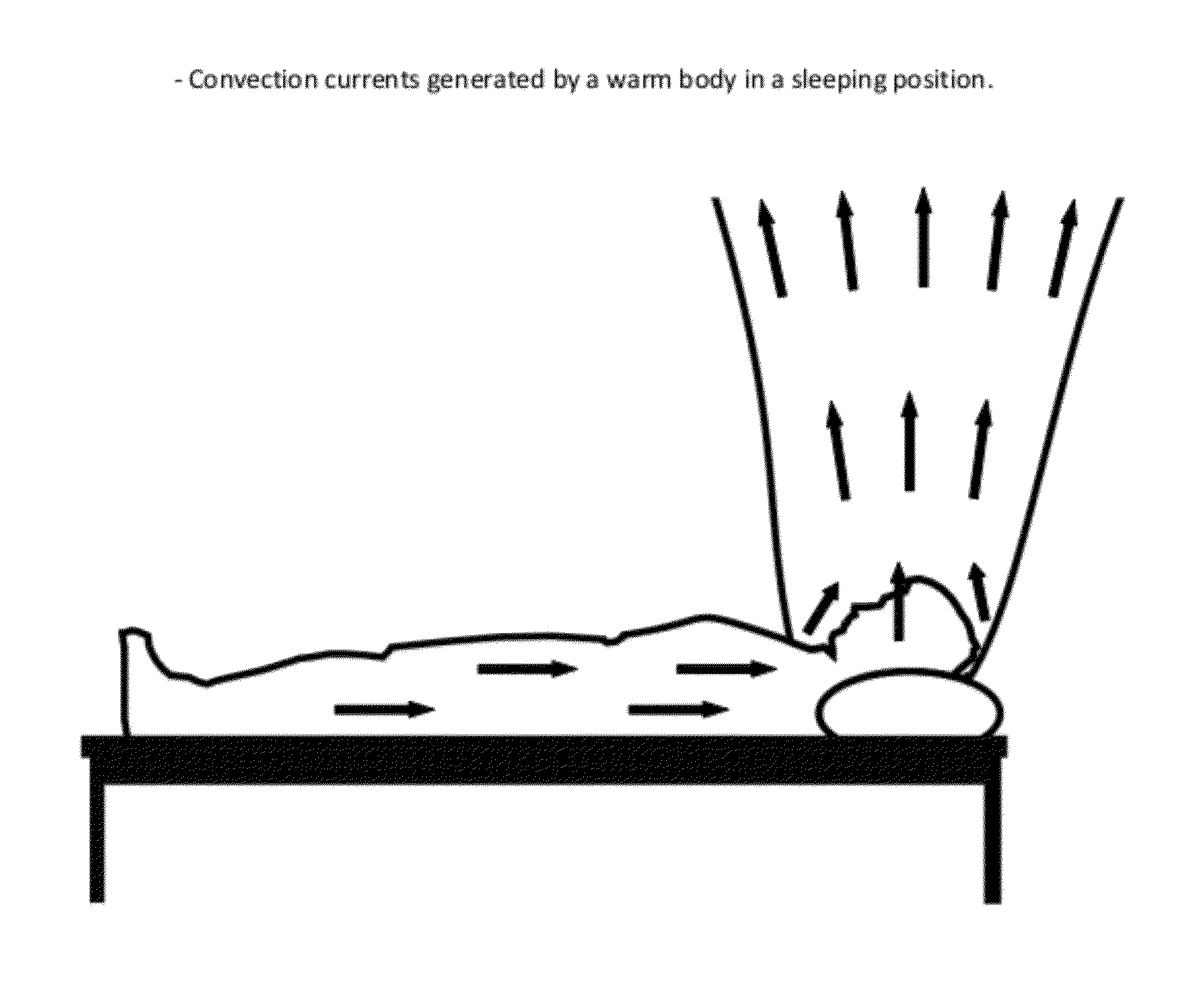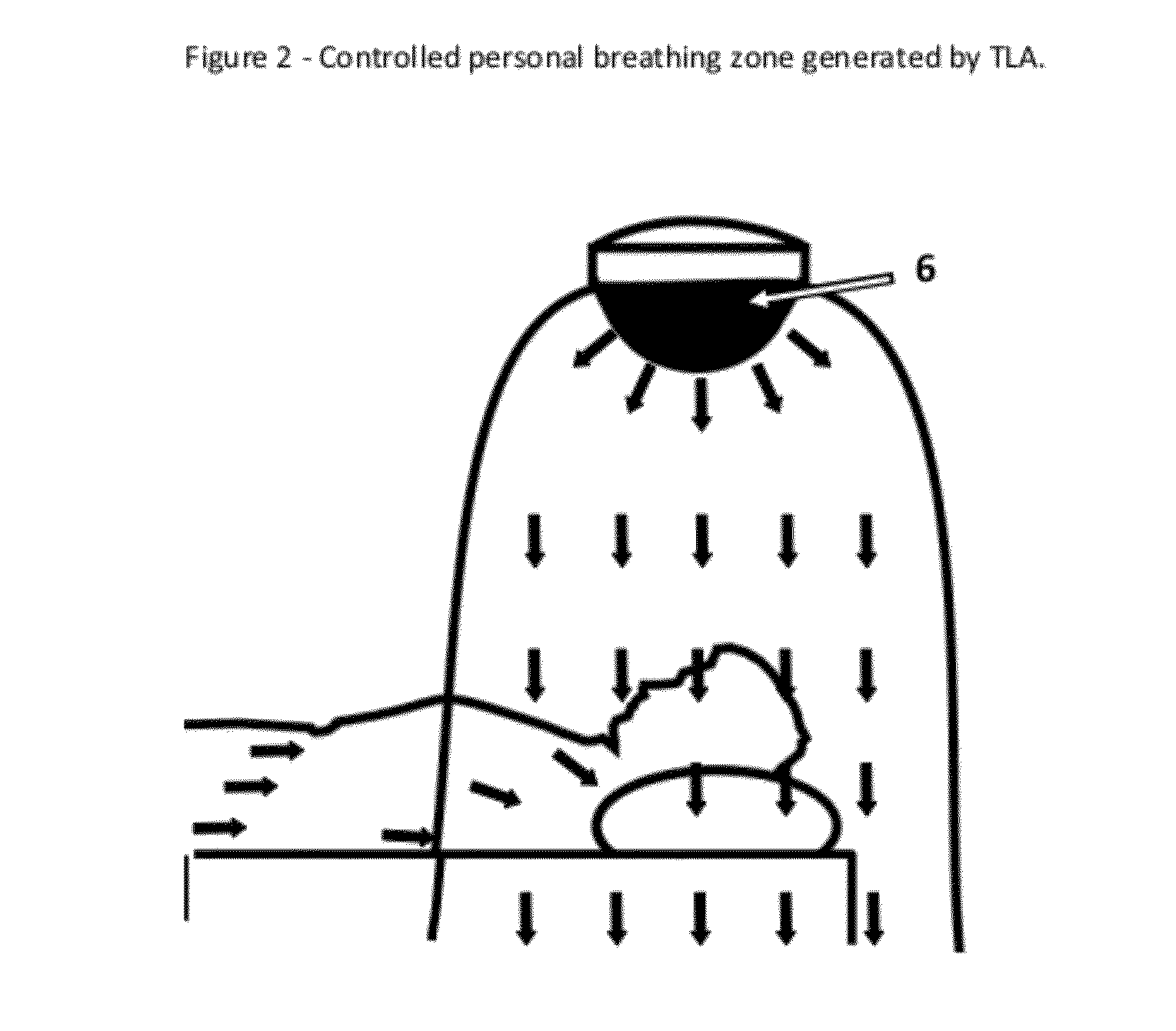Treatment of Asthma, Allergic Rhinitis and Improvement of Quality of Sleep by Temperature Controlled Laminar Airflow Treatment
a technology of laminar airflow and treatment of asthma, which is applied in the field of treatment of asthma, allergic rhinitis and improvement of sleep quality by temperature controlled laminar airflow treatment, can solve the problems of high treatment cost, substantial monetary cost including those of health care systems, and indirect cost such as time lost from work and premature death, so as to reduce the allergen load, reduce the symptoms of asthma, and reduce the effect of allergic asthma and allergic rhinitis
- Summary
- Abstract
- Description
- Claims
- Application Information
AI Technical Summary
Benefits of technology
Problems solved by technology
Method used
Image
Examples
example 1
Clinical Study Relating to Treatment of Asthma
[0119]To compare the efficacy of the Airsonett Airshower (AA) TLA device with a placebo device to reduce the degree of asthma symptoms in patients with perennial allergic asthma, sensitised to animal dander and / or house dust mites a clinical study was carried out.
[0120]The primary endpoint of the clinical study was a mini-AQLQ / PAQLQ score reflecting the developments in the symptoms of asthma. The mini-AQLQ / PAQLQ instrument is generally accepted as being sufficiently simple and robust to be suitable for research and quality of care monitoring in primary care at the group level.
[0121]As a secondary endpoint the efficacy of the AA compared with a placebo device to decrease FENO and increase PEF and FEV1, rhinitis symptoms (nasal block, rhinorrhea and sneezing), and quality of sleep was compared. Furthermore, the efficacy to reduce the RAST / ImmunoCAP value, i.e. allergen specific IgE levels and the eosinophil count from study start to study ...
example 2
[0147]Treatment of Asthma using a Specific TLA Device Configuration
[0148]A warm human body lying in a bed causes a convection flow transporting a high concentration of allergens and airborne particles to the person's breathing zone. As shown in FIG. 1, the warm body of a sleeping person generates such a convection air currents.
[0149]A TLA device such as the one illustrated in FIG. 3 provides a descending stream of filtered air that has sufficient velocity to overcome these convection body currents, as shown in FIG. 2. The air-temperature of the air delivered into the treated air zone is 0.5 to 1° C. cooler than the ambient air surrounding the treated air zone resulting in the displacement of warm body convection currents without exposing the patient to an unpleasant draft. The zone of treated air provided by such devices may provide more than 95% reduction in airborne fine particle counts. The generation of such a controlled personal breathing zone that is substantially free of in-m...
example 3
[0150]Treatment of Allergic Rhinitis using a Specific TLA Device Configuration
[0151]A warm human body lying in a bed causes a convection flow transporting a high concentration of allergens and airborne particles to the person's breathing zone. As shown in FIG. 1, the warm body of a sleeping person generates such a convection air currents.
[0152]A TLA device such as the one illustrated in FIG. 3 provides a descending stream of filtered air that has sufficient velocity to overcome these convection body currents, as shown in FIG. 2. The air-temperature of the air delivered into the treated air zone is 0.5 to 1° C. cooler than the ambient air surrounding the treated air zone resulting in the displacement of warm body convection currents without exposing the patient to an unpleasant draft. The zone of treated air provided by such devices may provide more than 95% reduction in airborne fine particle counts. The generation of such a controlled personal breathing zone that is substantially f...
PUM
| Property | Measurement | Unit |
|---|---|---|
| temperature | aaaaa | aaaaa |
| temperature | aaaaa | aaaaa |
| temperature | aaaaa | aaaaa |
Abstract
Description
Claims
Application Information
 Login to View More
Login to View More - R&D
- Intellectual Property
- Life Sciences
- Materials
- Tech Scout
- Unparalleled Data Quality
- Higher Quality Content
- 60% Fewer Hallucinations
Browse by: Latest US Patents, China's latest patents, Technical Efficacy Thesaurus, Application Domain, Technology Topic, Popular Technical Reports.
© 2025 PatSnap. All rights reserved.Legal|Privacy policy|Modern Slavery Act Transparency Statement|Sitemap|About US| Contact US: help@patsnap.com



